Companies use optical brightening agents (OBAs), also called Fluorescent Whitening Agents (FWAs), to give their products a brighter, whiter appearance.
Although adding OBAs creates a brighter product, the addition of these chemicals fundamentally alters the way the color is seen, which makes it impossible to accurately evaluate color by eye. Materials and fabrics that contain OBAs may appear similar in production under factory lighting, but those same products can look much different under other lighting conditions, like retail LED, daylight, or household incandescent light.
Anyone who is responsible for evaluating products that contain ultraviolet light needs a UV spectrophotometer and light booth to quantify how optical brightening agents impact the appearance of color under different light sources.
What is Ultraviolet Light?
Let's step back into elementary school science class. This is the visible spectrum – the light that we can see with the naked eye – and only a tiny part of the electromagnetic spectrum.

This is the electromagnetic spectrum. It starts on the far left with gamma rays and travels to the right through x-rays, microwaves, and radio waves. The tiny visible spectrum that falls between ultraviolet and infrared is the only part humans can see with the naked eye, unless OBAs are involved.
OBAs absorb a portion of the invisible ultraviolet rays and reemit them as blue light. This reflected blue light makes fabrics look brighter and whiter.
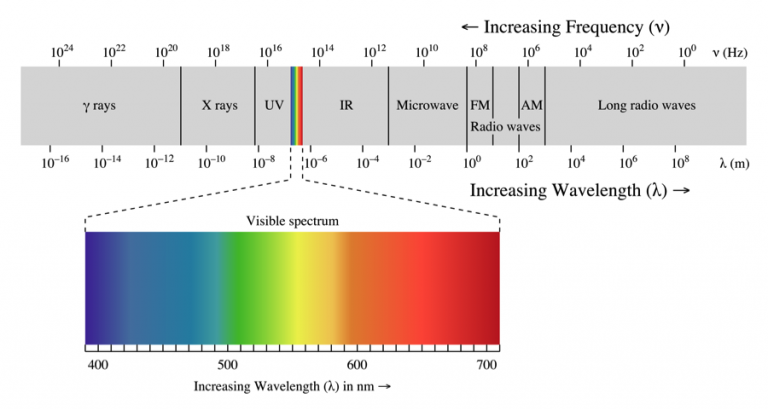
This image shows the visible wavelengths on the right, and the ultraviolet region on the left. Optical brighteners work by absorbing these UV rays and reabsorbing them in the region of the spectrum that is visible to the human eye.
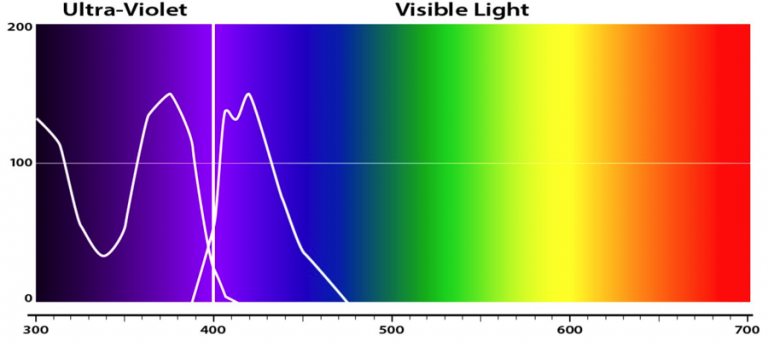
What is a UV Spectrophotometer?
Spectrophotometers that quantify the amount of ultraviolet and visible light absorbed by a sample concentration can evaluate color consistency for products that contain OBAs. These devices deliver calibrated UV light to measure and quantify this effect.
X-Rite UV Portable Spectrophotometer
The Ci64UV handheld sphere spectrophotometer has UV LED illumination to accurately quantify plastics, textiles and papers that contain optical brightening agents.
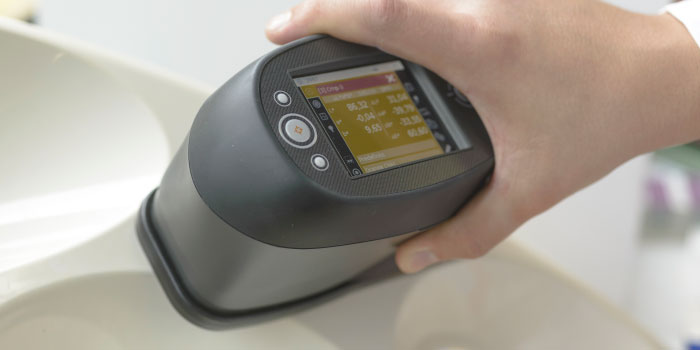
X-Rite UV Benchtop Spectrophotometers
X-Rite's Ci7820, Ci7800, and Ci7600 sphere benchtops offer UV illumination to quantify the effect of optical brightening agents on a variety of opaque and translucent samples.
X-Rite UV Inline Spectrophotometer
The ColorXRA 45 is a compact UV-calibrated 45°:0° inline, non-contact spectrophotometer. It can be mounted above paper and plastic production lines to identifying color shifts early and throughout production.
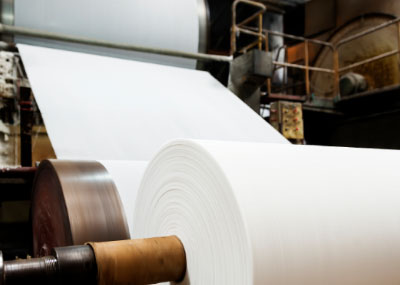
Using a Light Booth to Evaluate OBAs
Optically brightened items can also be visually examined under controlled UV lighting, such as that provided by the X-Rite SpectraLight QC light booth.
Under an ultraviolet light source, products that contain more OBAs will appear lighter, while products with less OBAs will be darker. The challenge is that you need to have a consistent amount of ultraviolet light to be able to quantify the amount of OBAs in a product. This means that when there is little or no UV light, the color differences may be invisible. But when it is present, the color differences become quite visible.
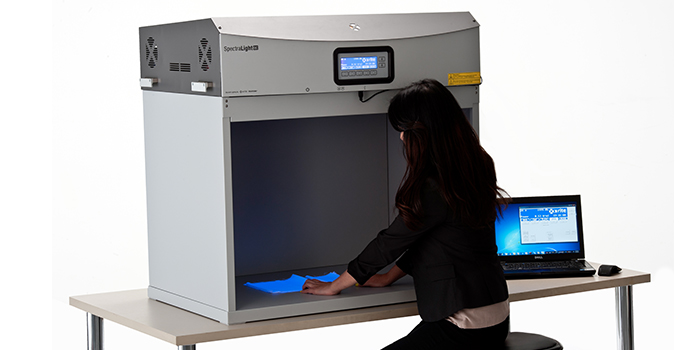
You May Also Like
- Monitor Paper Color and Brightness Inline Directly on the Machine | Whitepaper
Learn how an inline color measurement and control system helps paper mills keep color and brightness in harmony without cutting samples to measure in the lab.
- Cut Production Time in Half with a Digital Textile Color Program | Application Brief
Get to approved color faster and more efficiently while decreasing the textile industry’s environmental impact by leveraging digital tools to specify and communicate color.
- Controlling Optical Brighteners | Whitepaper
Learn what OBAs are, how they affect the colors we see, and the challenges of working with OBAs in materials and fabrics that appear similar in production, but may look much different under varied lighting conditions.
- Effect of Optical Brighteners on Paper and Plastics | Webinar
Watch this free on-demand webinar to learn how to bring color consistency to plastics products that use OBAs.
